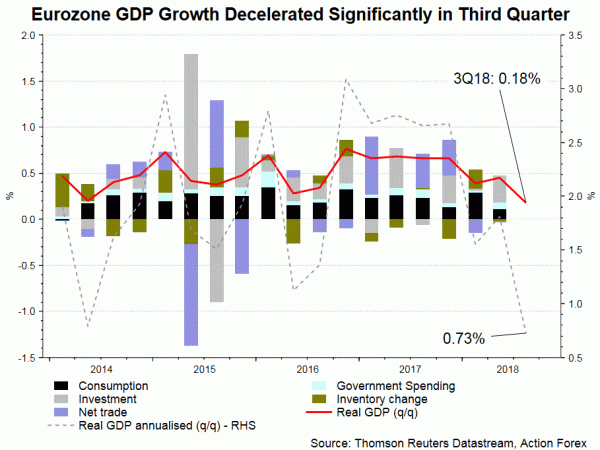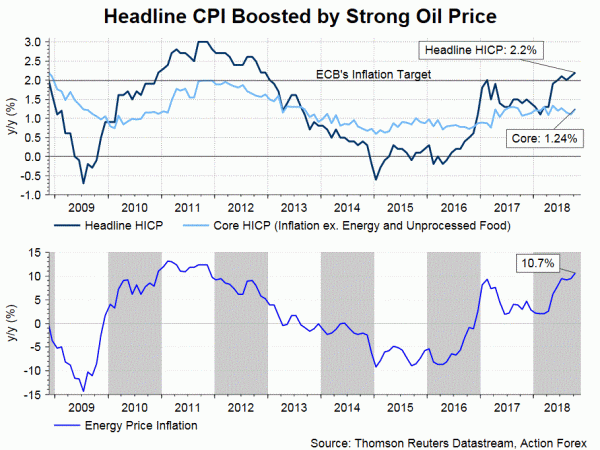ECB has tilted its tone on the economic outlook recently. In the minutes for the October meeting, ECB acknowledged “uncertainties and fragilities” in the economy. The members noted that risks to the economic outlook is skewed to the downside as driven by the uncertainties related to global trade. Yet, it reiterated the incoming data had not been able to derail Eurozone’s strength. In short, the October meeting concluded that “the incoming data, while somewhat weaker than expected, remained overall consistent with an ongoing broad-based expansion”.
We observe that ECB president Mario Draghi have changed his tone on the economic outlook in recent weeks. On November 8, he noted in Ireland that affirmed that “while some sector-specific data and selected survey results have been somewhat weaker than expected, the latest incoming information overall suggests that the broad-based expansion in the euro area is set to continue’. Yet, at the Frankfurt European Banking Congress on November 16, he admitted that “we have recently seen a loss in growth momentum”. He added that although ECB had lowered its last two quarterly growth forecasts, “actual data have also been weak”.
Dataflow since the October has pointed to the weak side. GDP growth decelerated to +0.2% q/q, the lowest level in three year, in 3Q18. Earlier this week, OECD revised lower its forecast on the region’s growth to +1.9% y/y for 2019, down from previous estimate of +2%. Growth in 2020 would slow further to +1.6% in 2020. The agency noted that growth in Germany would also moderate but “remain solid”. World GDP growth is downgraded to +3.7% for 2019, from previous projection of +3.5%. Headline CPI remained firm above +2%. Yet, it was driven by the rally in oil price. Core CPI remained at lukewarm +1.1%. Consumer confidence slumped to -3.9 in October, the lowest since March 2017. Markit’s PMI, due today, would be closely watched as it is the first report showing the development of economic activities in November.
ECB kept the main refi rate stays at 0% and the deposit rate at -0.4% and reaffirmed that the policy rates would stay on hold until at least the summer of 2019, to ensure that inflation returns sustainably to the target of below, but close to, 2%. Meanwhile, ECB’s monthly asset buying of 15B euro would end in December. the members would announce the reinvestment plan of the assets after QE ends in December. Given the downside risk embedded in the economy, it is possible for the central bank to push backward the timing that the policy rates would stay on hold.















